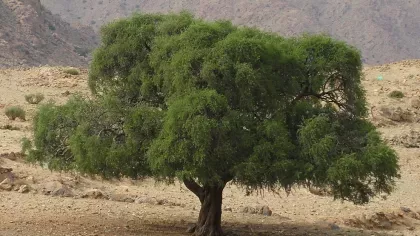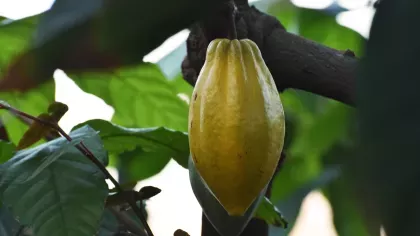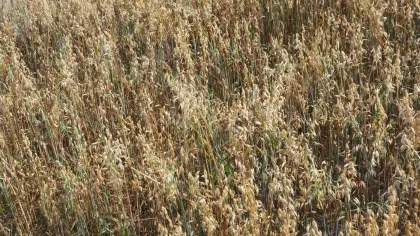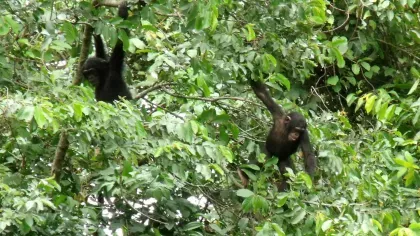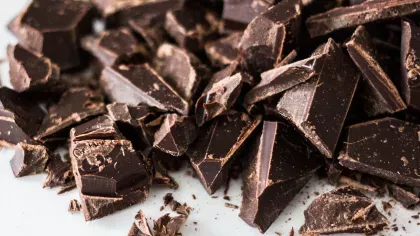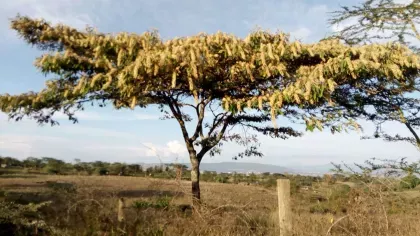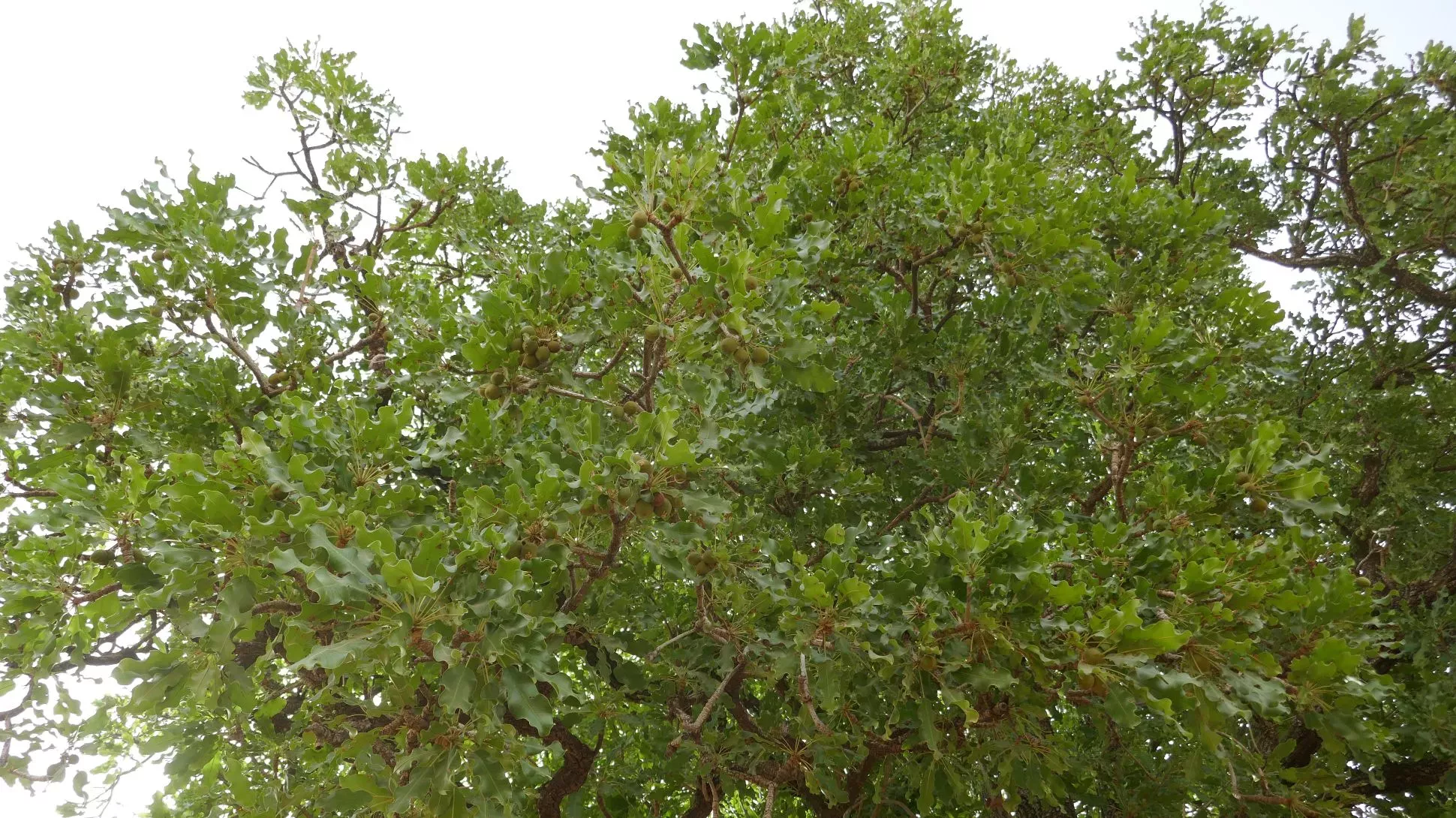
Shea tree
While the fruit of the shea tree might be more well known in the West as a cosmetic ingredient, in African countries, it is a crucial food and medicinal crop.
Shea butter is made boiling, drying, and grinding shea fruits into a powder, then mixing with water.
The shea tree grows in the dry savannah environments found in a number of countries across the middle of Africa.
However, this critical tree is now under threat from excessive logging and habitat loss.
In a good year, one shea tree can produce up to 50kg of fruit.
Plant description
The shea tree can grow up to 25m tall, with a wide crown. The bark is cork-like. The leaves are oblong, with wavy edges and grow in groups at the end of the branches, along with clusters of small white flowers. The fruits are flat and round, and resemble large plums. Inside are found around 2 to 4 shiny brown seeds, often called the shea nut.
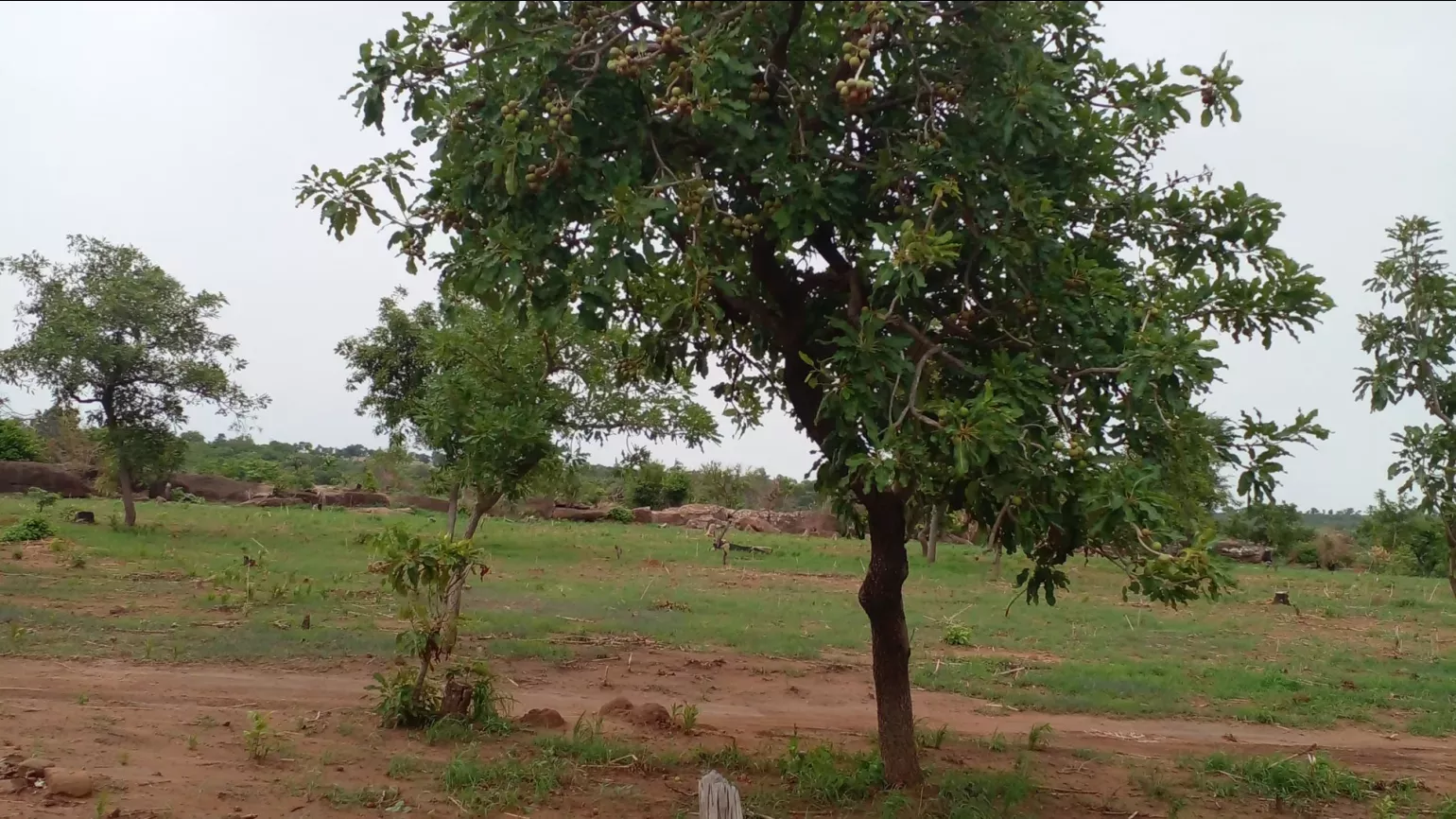
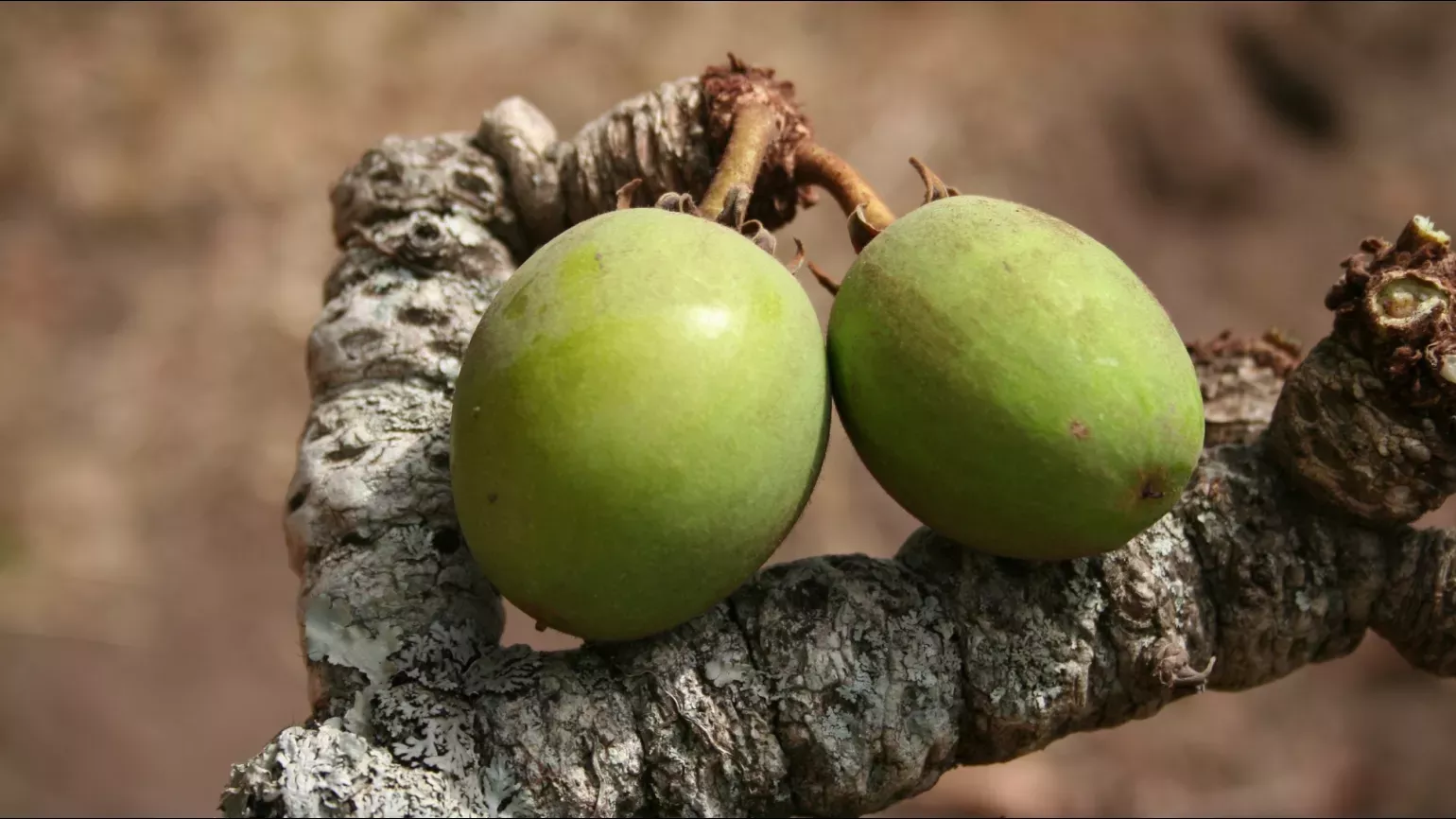
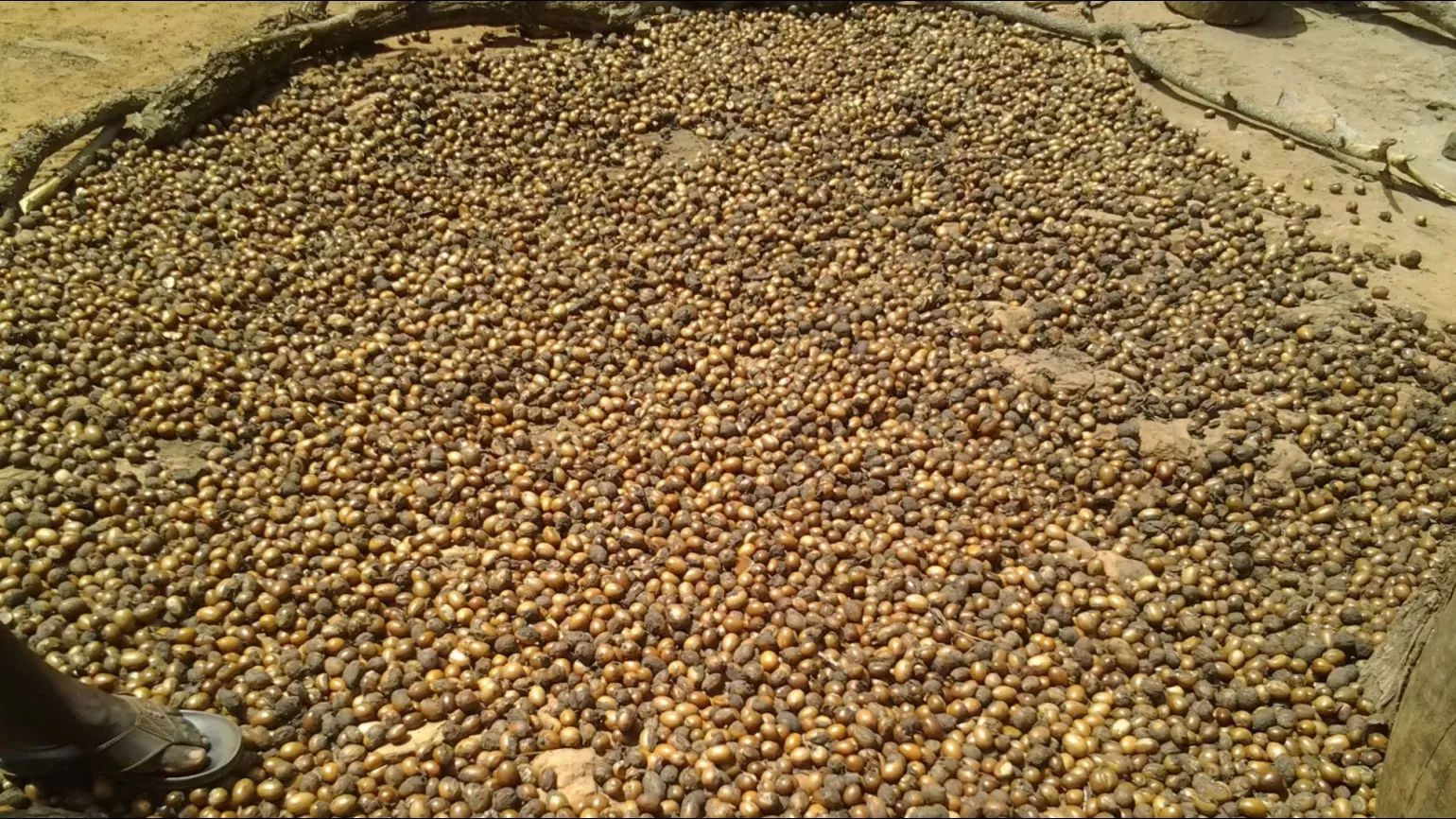
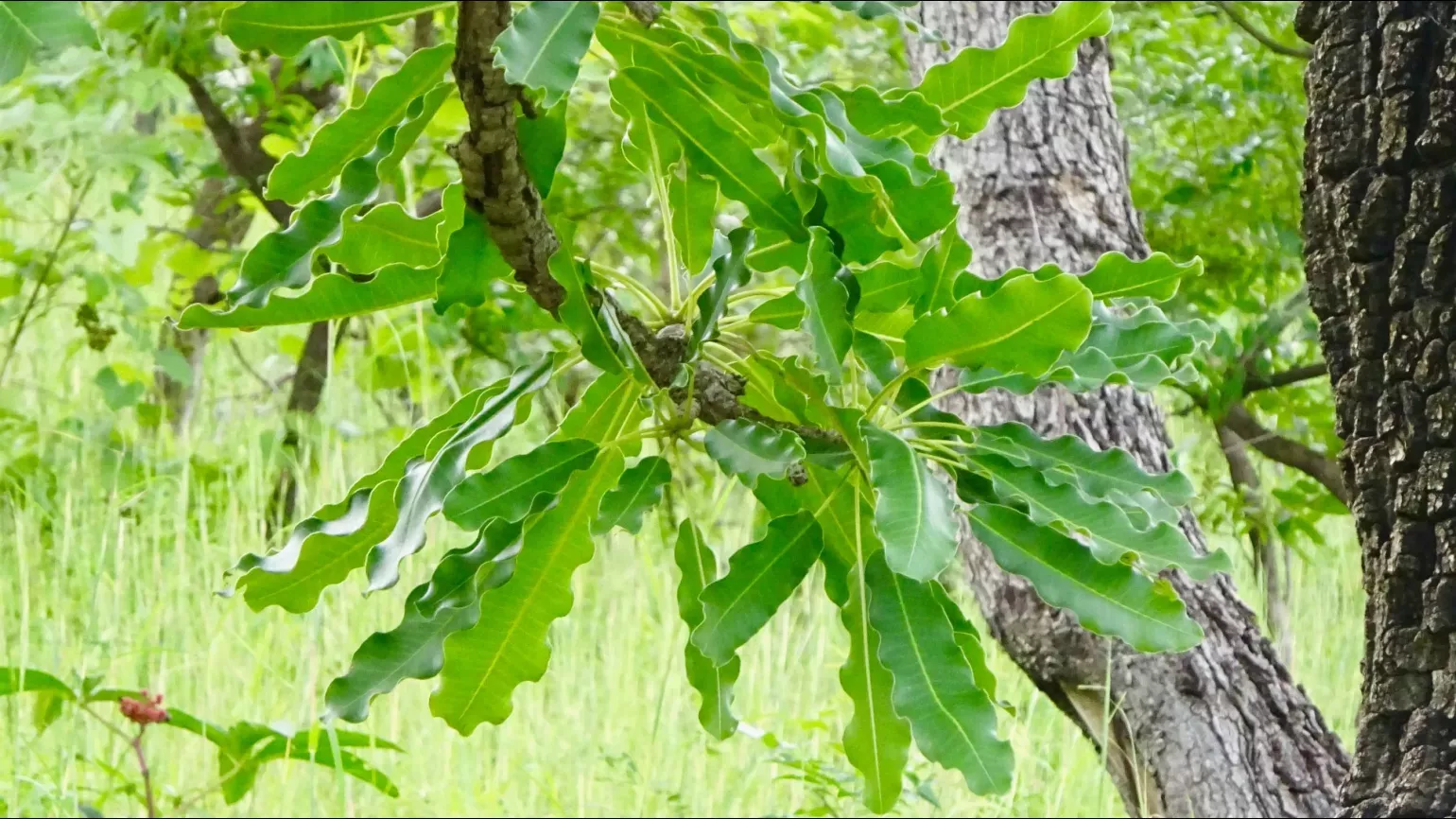
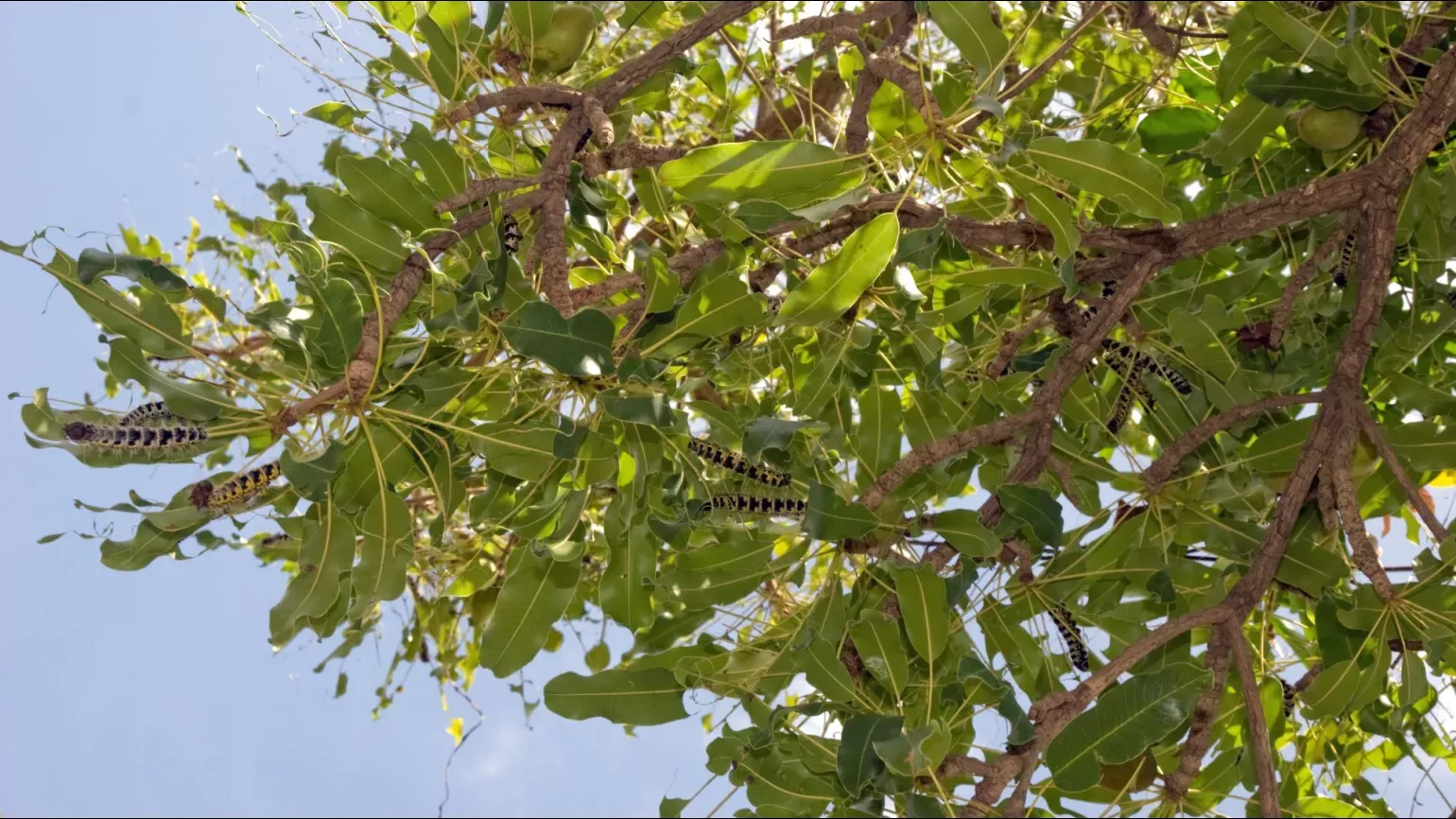
Plant uses
Beauty and cosmetics
Shea butter, a fat harvested from the kernel of shea fruit seeds, is used in a number of cosmetics, including skin creams and hair conditioners, for its moisturizing properties.
Both shea butter and shea bark are used to produce ose-dudu, or African black soap, first created by the Yoruba people of Nigeria.
Food and drink
Shea butter is used as an alternative to cocoa butter, although has a slightly different flavour.
Shea butter is sometimes used as a cooking oil.
Shea fruits are occasionally eaten in savannah regions of Africa.
Shea flowers are edible, and fried to create fritters.
Latex obtained from the bark of shea trees is used as chewing gum.
Health
Shea butter is used as a base for topical medicines.
Materials and fuels
The leftover seed husks from shea butter production are used as fertilizers.
Shea butter is used to waterproof homes by applying it to walls and ceilings of homes.
Shea tree wood is used as a fuel sources, and makes excellent charcoal.
Did you know?
The English name for shea tree comes from its name shísu in the Bambara language of Mali.
The caterpillars of the moth Cirina butyrospermi feed exclusively on the leaves of the shea tree, and are collected by people as a foodstuff.
The shea tree was originally in the genus Butyrospermum, which means "butter seed".
Where in the world?
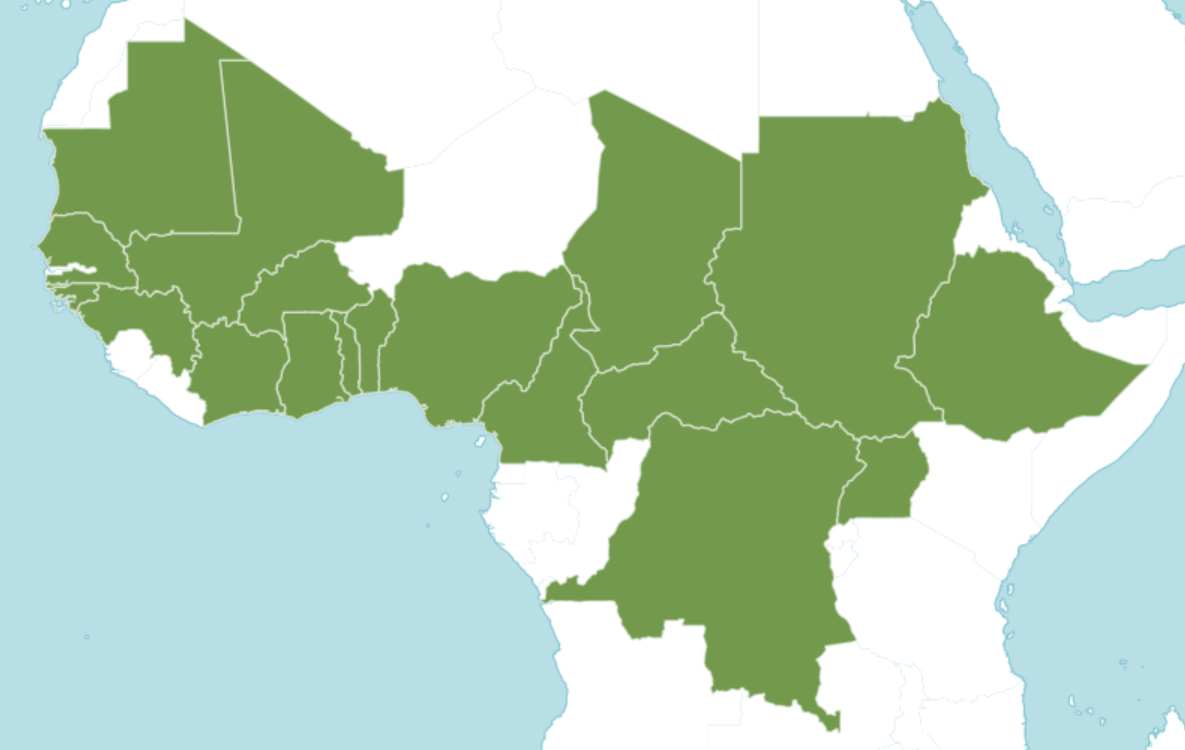
Grows in drier lowland tropics and savannah, at elevations to 1,500 metres.
